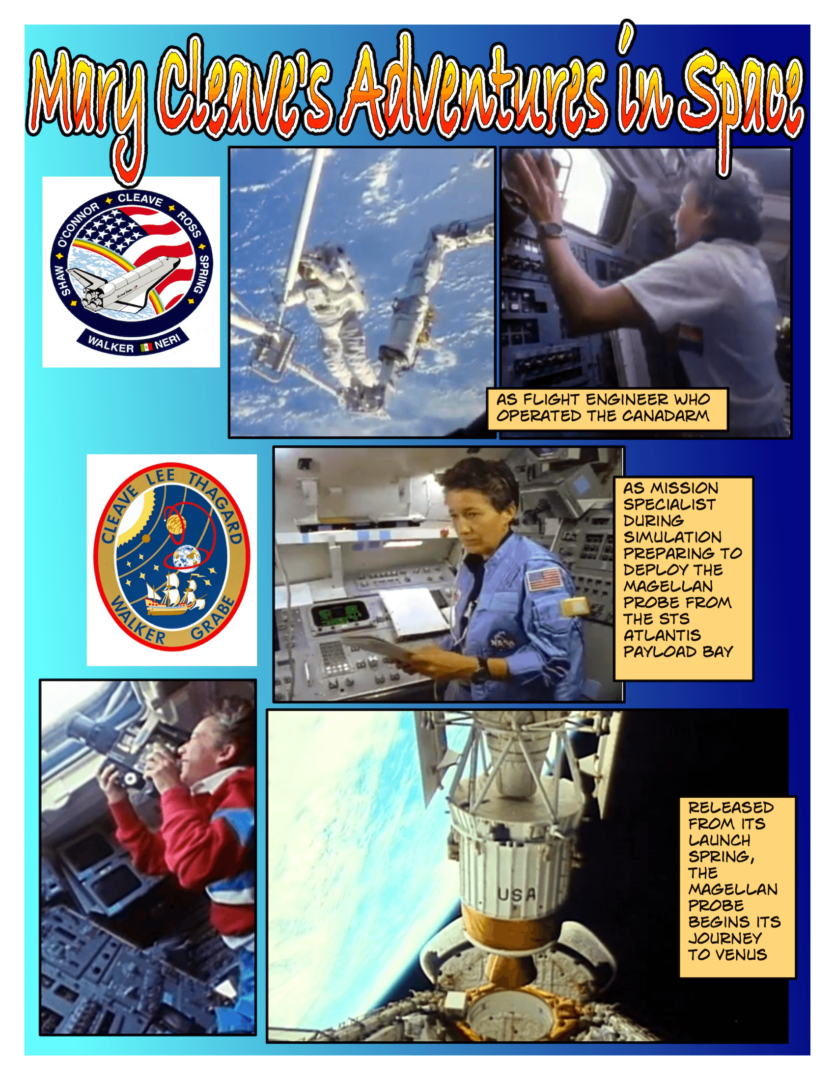Environmental Engineer
On February 5, 1947, American astronaut Mary L. Cleave was born. Plant and soil sciences intrigued her as she grew up. She specialized in microbial ecology then concerned herself with what might be possible if she could apply scientific and engineering principles to the environment. With a doctorate in Civil and Environmental Engineering, Cleave began studying how to apply what she learned to local and global issues such as the quality of our atmosphere and water.
Of special interest to her was the scientific study of algae or phycology, from the Greek phykos [seaweed]. Algae are found in some form just about everywhere on Earth from the ocean to the desert, on snow and ice! Algae make many positive contributions to life on this planet. In addition to its ability to capture carbon dioxide, algae can decrease ocean acidification. It can be grown for food. It can be used to remove nutrient overloads in wastewater that would otherwise contribute to creating marine dead zones, those bottom areas of waters too oxygen-depleted to support life.
NASA researches on various forms of algae indicate they can and help recycle the breathing supply within closed air systems and even turn sewage into biofuel. Even the tiniest of algae can relay important data to an environmental engineer. Cleave’s work assessing algal desert soil crusts and freshwater phytoplankton, and developing a computer data assessment program, prepared her for future projects at NASA.

At NASA, Cleave flew twice as a mission specialist on Space Shuttle Atlantis. She was the flight engineer and operated the robot arm on STS 61-B during which three communications satellites were deployed. Her STS-30 flight marked the first deployment of a planetary probe – the Magellan radar mapping spacecraft – for its 15-month journey to map the surface of Venus.
For five other space shuttle flights, Cleave served as CAPCOM, the capsule communications contact responsible for most communications with the shuttle during the missions, relaying instructions, and messages to and from the shuttle.
As a scientist-environmental engineer whose first look at the planet from space registered how little land there actually is on the Earth, Cleave turned her attention to water environments. She worked as Project Manager for SeaWiFS [Sea-viewing, Wide-Field-of-view-Sensor], an ocean color sensor that began to monitor Earth’s chlorophyll every 48 hours. After serving as Deputy Associate Administrator (Advanced Planning) Office of Earth Science, she retired from NASA.
Like many of her colleagues-in-space, Cleave became an active advocate for the planet’s well-being as a public speaker about Earth’s marine biosphere and Earth Science discoveries and as an advisor to organizations involved in environmental science projects.
Among other honours, Cleave received the American Astronautical Society Flight Achievement Award, a NASA Exceptional Achievement Medal, and named NASA Engineer of the Year [1998].
B Bondar / Real World Content Advantage